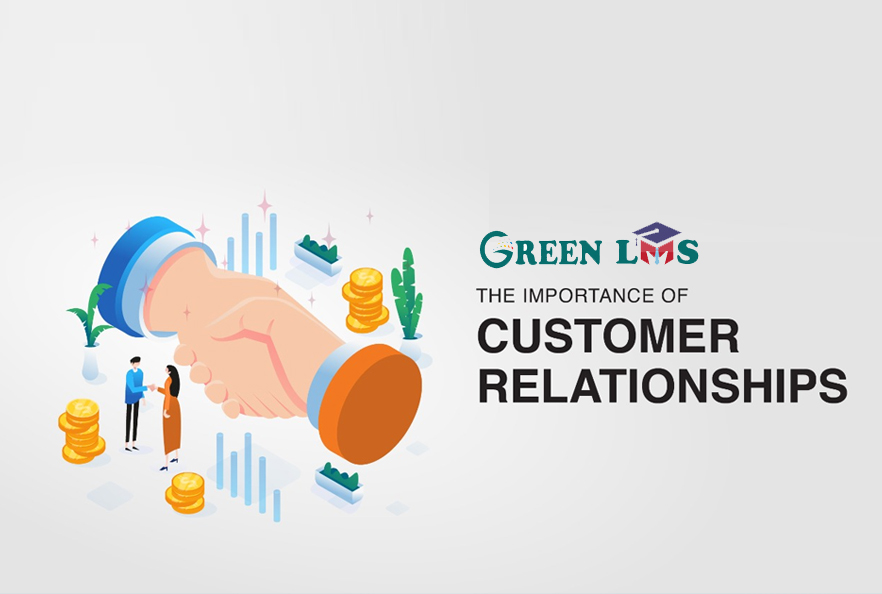When we think, about whom benefits from a learning management system, the first people that come to mind are employees. People-focused decision-makers don’t need to look much further to be convinced to incorporate an LMS, however, we’ve all come across one or two leaders who require a more underlying motivation.
If this is the case in your organization, this article is for you. Because there’s a second group that will benefit from your team’s use of an LMS: your customers. That is how.
1. Improve customer Onboarding to start on the right foot
One of the most critical touch points you have with a customer is the first one: your onboarding experience. Good onboarding experiences are one of the biggest deterrents to churn, which is crucial as even a 1% churn rate can have a 12% impact on a company’s valuation over five years.
With an LMS, you can customize onboarding training that not only tells a customer how to use a product but also walks them through hands-on demos of the product.
It can be integrated with communication tools like video conferencing, project management, or chat to create an onboarding experience that is a combination of customer representative support and digital training.
2. Educate your customers throughout their journey
You may have the best product ever invented, but if your customers don’t know how to use it, they won’t like it. Worse still, they will blame you.
Client education should not stop at Onboarding. As customers start using the product, they will encounter questions about their specific needs. They will also find advanced features that they can gain a lot from, but they don’t know how to use them.
Using an LMS, you can create an optional training library that your clients can access on their own time. Each training can cover a different topic and be tailored to a different learning style. At your own pace, you can resolve problems and respond to inquiries from customers, with the option to ask a representative for assistance if necessary.
3. Gamify Training to Reward Customers (and Spark Happy Feelings)
After reading the tip above, you may be wondering, “But how do I get my clients to sign up for training?” The answer is “Gamification.”
Gamified experiences, in which game components like scoring, rivalry, or prizes are included, are becoming more popular in LMS systems.
The reason Gamification works is scientific: Games release petrochemicals like dopamine, which makes you want to try something again, and serotonin, which makes you feel rewarded and happy.
You can Gamify your customers’ training experience, for example, by providing badges for each successful training level they complete.
4. Use Gamification to inspire your team for Customer Success too
Great customer experiences require great customer service representatives. An LMS helps keep your team members informed about industry best practices and offers online customer service training. And you can level up using Gamification to create some friendly competition.
Create a leaderboard showing which reps completed which training, with badges awarded to the top finishers. You can also view customer feedback (more on that later) to the extent that it doesn’t violate privacy, and reward reps who have the highest satisfaction score.
5. Collect feedback in One Centralized Location
An LMS is not just for disseminating information; it is also a great tool for collecting data. Using your LMS, you can create customer surveys and ratings.
The former enables you to receive thoughtful feedback, whereas the latter gathers data regarding your customers’ learning processes. You can use this data to spot trends in customer satisfaction, weaknesses in product understanding, and other potential areas for relationship improvement.

6. Integrate with your CRM so no customer misses an update
Product changes and updates can be one of the busiest times in customer relationship management. Not only do you have to distribute information to each customer, but often those communications also need to be segmented based on a variety of factors.
This process risks time and errors. When all the updates are announced, many customers have already tried to use the product and had problems.
You can mitigate these difficulties by integrating your LMS with your CRM. Create segmented, easy-to-follow training in your LMS, then use your CRM to correctly deliver the training to each customer.
7. Get in front of Disengagement
By tracking your customers’ interactions with your LMS training, you may notice patterns of low usage that may indicate a disconnect with your product. Such trends could cause someone to cancel their service. However, when they are caught early, you can schedule an “action” by contacting the customer to ask how you can help.
An LMS is a tool for people, but it’s not just for your internal people. Of course, you’ll need to train your customer service team and follow best practices to improve customer satisfaction, but your customers also have a lot to gain from the training, Gamification, surveys, and data provided by an LMS.
Green LMS can be tailored for various applications, including higher education LMS, Schools LMS, LMS for corporate training, and LMS for business development and Click here for a Free LMS Demo Now.


